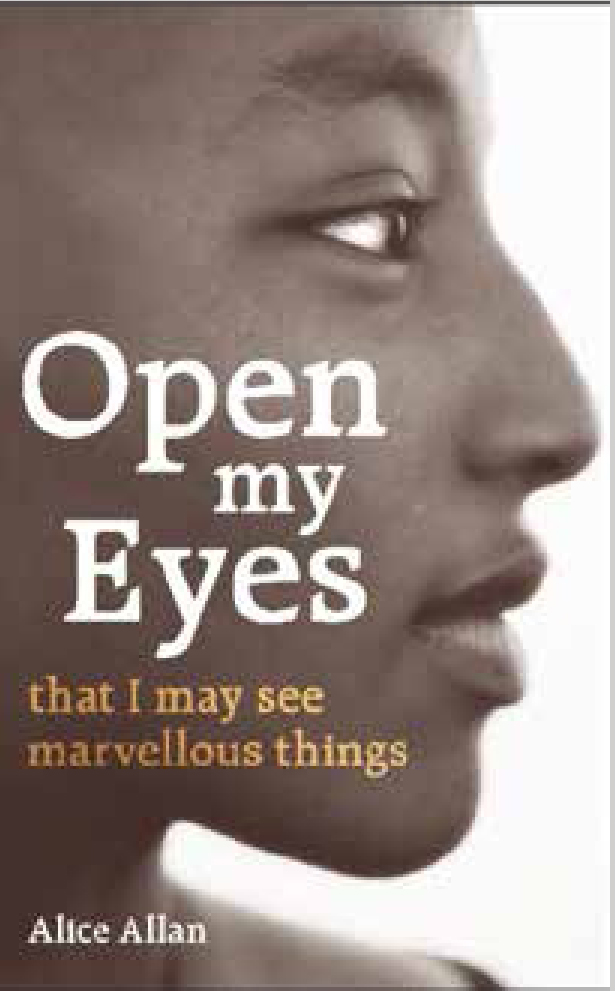Open My Eyes

Alice Allan's Open my Eyes, that I may see marvellous things is a compelling and original debut novel. Influenced by her experiences as a lactation consultant in Addis Ababa, the story draws on Allan's clinical knowledge and experiences in Africa. The narrators change throughout the book, but the story stars Mariam, an adopted midwife who has returned to her birthplace in Ethiopia to undertake voluntary service.
When Mariam witnesses a homeless woman abandon her premature baby after birth, her own feelings of loss and desertion resurface. So begins her crusade to save the life of this baby, whose beginnings mirror her own. Mariam's colleagues consider this a futile exercise for an unwanted baby destined for the state orphanage. In a hospital with limited neonatal intensive care facilities but a strong belief in modern medicine, Mariam introduces the concepts of donor breast milk and kangaroo care for premature babies to the NICU. Enlisting her friend Rahel, a neonatal nurse, and Dr John Spencer, an English paediatrician, Mariam risks her professional reputation to be sole advocate for a baby that may otherwise die.
Allan's prose is her strength, and she paints a vivid picture of a chaotic and colourful Addis Ababa. The Amharic language and vignettes of Ethiopian history make for an engaging read beyond the central story line, and a mysterious street character relates a separate fantastical narrative, which intertwines irrevocably with Mariam's fate and adds much to this novel's illumination of the city.
Mariam is steadfast, reliable, and ambitious; she is proud to return to England and be appointed the ‘youngest ever’ head of her midwifery department. Despite this, she feels like a ferenj (foreigner) in her birth country and admires John, who grew up in Ethiopia, for his sure sense of identity and belonging.
The tentative relationship between Mariam and John plays second fiddle to the main love story—that between Mariam and her baby. The chapters narrated from child's perspective are so powerful that it is difficult as a midwifery professional not to feel affected by them. Allan's depiction of how skin-to-skin contact, comfort holding, and medical intervention differently affect the most vulnerable of babies is both moving and insightful.
There is limited description of antenatal or intrapartum midwifery care in Open my Eyes, save for a well-executed birth scene in the first chapter, where Mariam comes face-to-face with the everyday hardships for women in Addis Ababa. However, Allan describes NICU protocols and the interconnected relationship of the multidisciplinary team with clarity throughout. Mariam relates the benefits of breast milk and kangaroo care with absolute confidence, and it is evident that Allan's own experience in the postnatal period gives depth and credibility to these passages.
The emotional portrayal of the midwifery profession in Open my Eyes could be seen as simplistic. Mariam herself seems to believe there are two types of midwives—the thick-skinned workhorses such as herself, and the ‘Ina May hippies’. However, Mariam's view of herself as a midwife and woman changes through the novel, as she allows herself to become vulnerable and human. A convenient climax does not truly detract from Mariam's own character development, and she is a well-realised and flawed protagonist throughout.
Open my Eyes is a poignant novel of loss, love, and the power of touch. Themes of adoption, belonging, and attachment are interwoven skilfully through Mariam's story. Her struggle to remain professionally detached while advocating for a baby in an emotional situation will ring true for many midwives, a reaction that may be compounded by the accuracy of Allan's clinical scenarios. This book provides an original insight into optimal care for premature babies, and is an extraordinary first novel.

